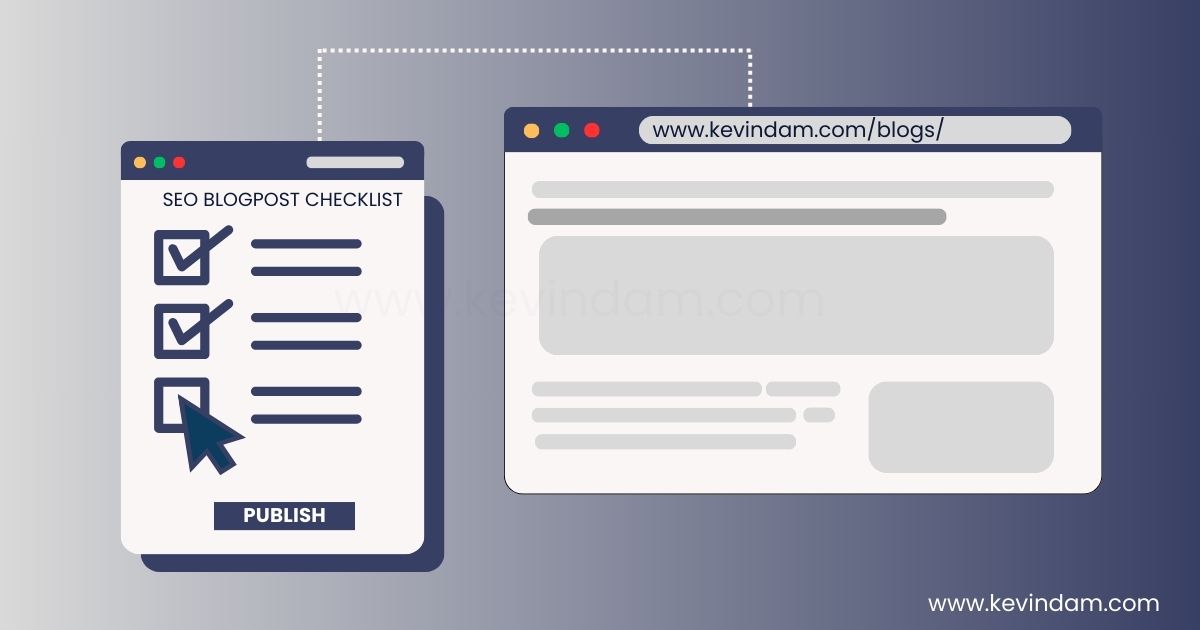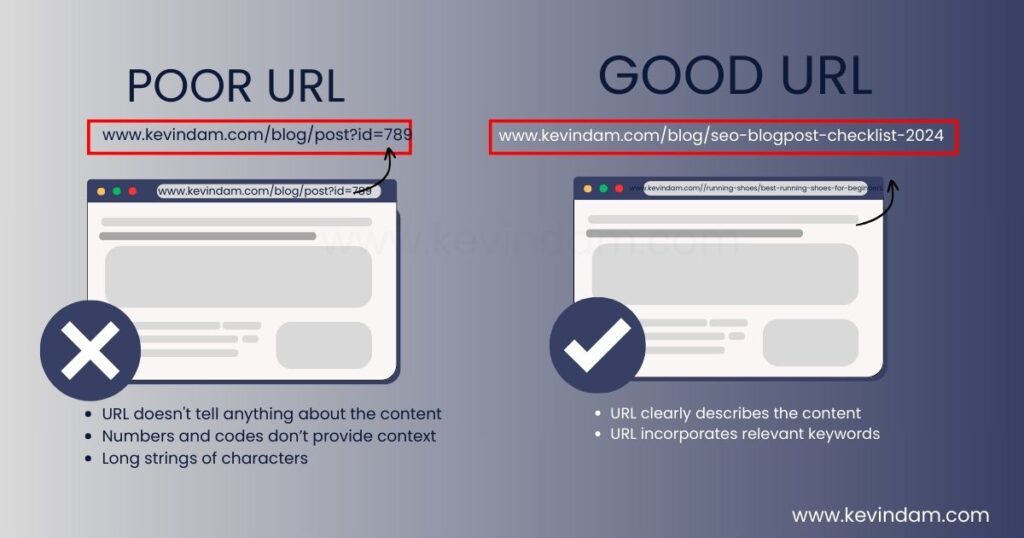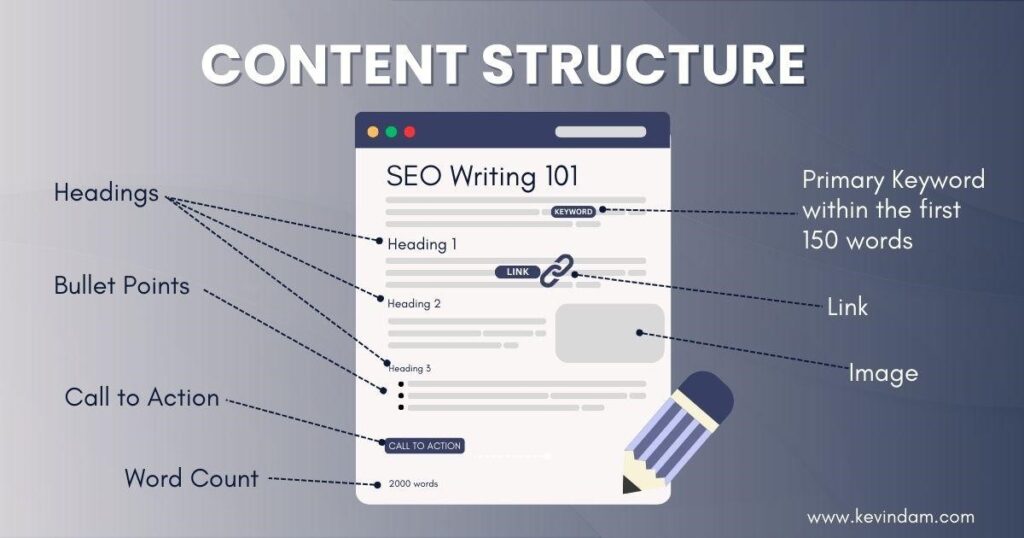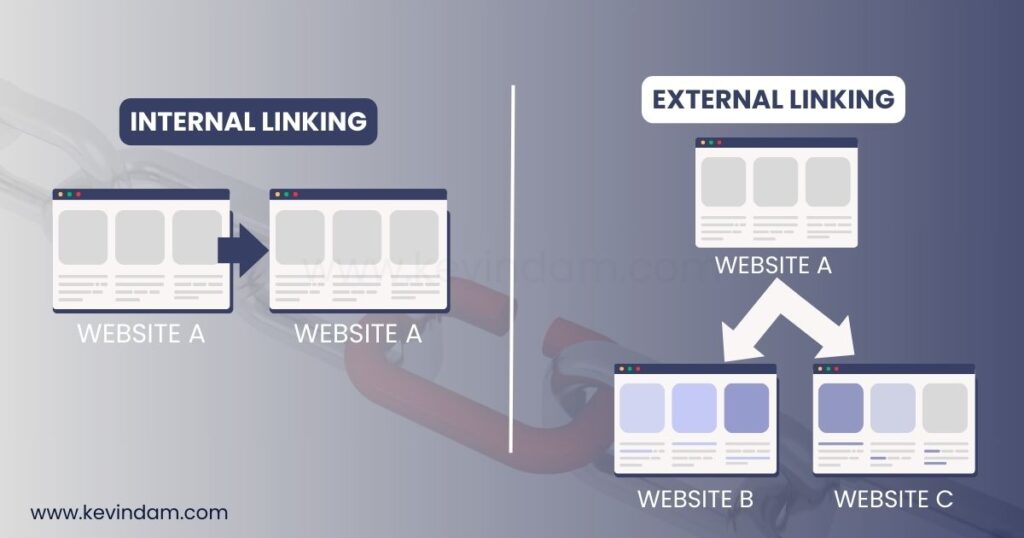
Last Updated August 14, 2024
SEO Blog Post Checklist: Best Practices for Optimising Your Blog Content
Crafting compelling blog content involves more than just writing. Mastering SEO is crucial to ensure your blog reaches your target audience. This article explores a comprehensive SEO blog post checklist outlining the best practices such as keyword research, understanding search intent, URL and title optimisation, semantic enhancements, and linking strategies to optimise your blog content for search engines and readers alike.
Preliminary Steps for SEO Optimisation
Before creating an SEO-optimised blog post, start with effective keyword research and a clear understanding of search intent. Identifying your post’s main topic or central entity is the first step in crafting a piece that not only captivates but also aids those seeking information. Exploring various attributes and perspectives of your chosen topic can help you craft a relevant and in-depth post, enriching the user experience.
Plan Your Content Using Keyword Research
Keyword research guides you toward the terms and phrases your target audience uses in their search queries. It’s essential to understand the keywords your potential readers use in search engines. Keyword research tools provide invaluable insights into relevant keywords and their search volumes.
Designate a primary keyword that embodies your blog post’s core subject. This keyword anchors your content, attracting organic traffic. Incorporate secondary keywords that support and enhance the main topic, contributing to a diversified and organic ranking boost. Avoid keyword stuffing by ensuring these terms flow naturally.
Understand Search Intent

Understanding search intent is like cracking a secret code that reveals what the searcher truly seeks. There are four types of search intent: informational, navigational, transactional, and commercial. When individuals type in a search term, they’re on a quest—to learn something, find a website, make a purchase, or research a potential buy.
Catering to user intent means offering a clear, direct response to their inquiry. Aligning your content with search intent increases engagement and conversion chances, whether it’s signing up for an email list, downloading a resource, or making a purchase. Prioritising user intent bridges user inquiries and your content, leading to an SEO strategy that resonates with searchers and search engines.
URL and Title Optimisation
Optimising your blog post’s URL and title tag is essential for better visibility in search engine rankings and enticing potential readers to click through from the SERPs. The art of crafting an SEO-friendly URL and a compelling title involves incorporating the primary keyword in a strategic, concise, and straightforward manner. This helps search engines understand what your content is about and can significantly improve your click-through rates, as searchers often gauge the relevance of a page by its title and URL.
Include Your Keyword In Your URL

The URL is one of the first elements that a search engine evaluates to determine what a page is about. Including your primary keyword in the URL can strengthen your SEO efforts by making your post more relevant to the search query. Short and descriptive URLs are more memorable and easier to type and tend to rank better in search results. A user-friendly URL that’s easy to share on social media or through other platforms means increased visibility and potential for organic traffic. Thus, a thoughtful URL with your main keyword can serve as a signpost, directing more traffic towards your content.
Front-Load Your Keyword In Your Title Tag
The title tag of a blog post should prominently feature the primary keyword. Front-loading your keyword at the beginning of the title emphasises its importance. Search engines give more weight to terms that appear early in the title, resulting in a stronger SEO impact. Additionally, a title presenting the sought-after keyword can capture users’ attention more effectively, encouraging them to click.
Embed Title Tag Modifiers
Using relevant modifiers like “best,” “guide,” “review,” “how-to,” or “2023” in your title tag can capture a broader yet targeted audience conducting long-tail searches. These modifiers make your titles more dynamic and align with specific search intents, such as seeking guidance or the latest information. This variation targets users with a clear idea of what they’re searching for, often leading to improved engagement and lower bounce rates.
Write a Captivating Blog Post Title
The power of a well-crafted blog post title cannot be overstated. It acts as a hook, grabbing the scroller’s attention amid search results. An engaging title offers a snapshot of what to expect from the blog post, sparking interest and curiosity. Framing your title to match the search intent can forge an instant connection with your audience. For instance, if the search intent is informational, titles featuring words like “guide,” “tips,” or “ways to” can be particularly appealing. Titles should also invoke your post’s benefits, showing readers what they stand to gain by reading further and thereby inspiring more clicks and enhanced user engagement.
Content Structure and Initial Engagement

Content structure is pivotal to engaging readers and improving the overall user experience. A well-organised blog post makes the content more digestible, guiding readers through a logical progression of ideas and increasing reader retention and interaction. A clear structure allows search engines to better understand and index your content, positively affecting search engine rankings.
When a blog post is attractively broken into sections with descriptive headings, bullet points, and images, it can capture and maintain readers’ attention, making them more inclined to interact with the content through likes, shares, and comments.
Get your blog post SEO checklist here.
Use Your Keyword Once In The First 150 Words
Placing your primary keyword within the first 150 words of your blog post is a strategic SEO practice that signals relevance to search engines. This early keyword placement helps to reaffirm your content to the search engine, aligning it closely with the target keywords and search queries. This step enhances the visibility of your post in SERPs, particularly in response to the pertinent search term. This tactic supports your SEO efforts and assures readers that they’ve found a post matching their search interest.
Use Your Keyword in H1, H2, or H3 Tags
Incorporating your primary keyword into H1, H2, or H3 tags within your blog post is a crucial SEO technique contributing to your content’s structural and hierarchical organisation. Headers provide a clear outline of your blog post’s content and make it skimmable for users, which can improve engagement and time on the page. Using keywords in headings helps search engines grasp your content’s main topics, increasing the relevancy of your post and boosting your search rankings.
Optimise the Length of Your Blog Post
Finding the right balance in the length of your blog post is essential for covering the subject matter thoroughly while maintaining reader engagement. The ideal length can vary depending on the topic’s complexity and your readers’ search intent. Long enough to provide value and comprehensive coverage but concise enough to keep the reader interested—that’s the balance to strike. Quality should always precede quantity; providing high-quality content that benefits your reader must be the goal, rather than hitting an arbitrary word count.
Focus on Readability
Creating content that is easy to read and understand is paramount in connecting with a more extensive audience. Your writing should be clear, concise, and formatted to make it accessible to readers of all levels. Short paragraphs, a friendly and conversational tone, and the strategic use of bullet points and subheadings to break up text can significantly enhance readability.
A well-formatted post with high readability scores can lead to better user experiences, lower bounce rates, and increased chances of readers staying longer and engaging with your content.
Semantic Enhancements and Contextual Layers
In the ever-evolving landscape of SEO, adding semantic enhancements and contextual layers to your blog content is beneficial and essential. These layers of context go beyond the basic topic to enrich the reader’s understanding and create the most informative and comprehensive content on the subject. Weaving in related concepts, historical data, case studies, and user stories not only answers the immediate question posed by the search query but also addresses related areas of interest. This depth of content ensures that your blog post becomes a valuable resource for readers, encouraging longer engagement and establishing your site as a thought leader within your niche.
Use Synonyms and LSI Keywords (Latent Semantic Indexing)
Integrating synonyms and LSI (Latent Semantic Indexing) keywords into your blog posts is a subtle yet powerful way to boost your search engine optimisation efforts. Instead of concentrating solely on your primary keyword, using related terms and synonyms can organically enhance the keyword density without falling into the trap of keyword stuffing.
This approach reflects the natural language and variations people use in search queries. When you incorporate synonyms and contextually relevant keywords, you are effectively optimising your content for a broader array of search terms, which can improve your content’s visibility and SERP rankings. This indicates to search engines that your post is relevant and has a lot of information on the subject matter.
Add Contextual Layers Related to the Central Entity
To enrich the content and enhance user experience, adding contextual layers related to your blog post’s central entity is important. These contextual layers can include background information, current trends, related issues, or future implications that give the reader a holistic view of the topic. By doing so, you cater to various levels of user intent, from those seeking basic definitions to others demanding more in-depth analysis or practical applications. These additional layers not only educate and inform but also demonstrate to search engines that your content has breadth and depth, which could positively influence your ranking power for related search terms.
Write the Best Piece of Content on the Topic
To stand out in the crowded digital space, strive to write the best content on the topic. Your content should be thoroughly researched, accurate, well-structured, and clearly communicated. An authoritative post provides unique insights, gathers and synthesises data from reputable sources, and engagingly presents this information. Remember, the ultimate goal is to address the reader’s search query so effectively that they do not need to seek information elsewhere. Not only does this enhance the user’s experience, but it also signals to search engines that your content is of high quality, which could result in higher rankings and increased organic traffic.
Multimedia and Formatting Features
Well-structured and visually appealing content isn’t just easier on the eyes—it’s also a key factor in improving engagement, readability, and SEO rankings. Good formatting helps break down information into digestible chunks, guiding readers through the content and making it more accessible. Use headings, subheadings, bullet points, and bold or italicised text to emphasise important points and organise information coherently. This structure is more than just aesthetics; it allows search engines to better understand and index your content. It can lead to featured snippets in search results, which boosts visibility. Also, a properly formatted post encourages readers to spend more time on your page, signalling to search engines that your content is valuable and should be ranked higher.
Add Images and Videos to Your Blog Posts
Multimedia, such as images and videos, can significantly enhance user engagement and retention on your blog. Visual aids support the text, providing an alternative way for users to process information and stay interested. For example, tutorials and demonstrations via video can be more effective than text alone. Furthermore, content with relevant images and videos tends to be shared more on social media, potentially increasing your reach. Including multimedia is also known to reduce bounce rates, as users are more likely to stay on the page to interact with the content, indirectly boosting your SEO performance.
Optimise Images
Incorporating images in your blog posts isn’t just about adding aesthetic appeal—it’s a crucial part of SEO strategy. Images can break up text-heavy content, making it more engaging and easier to understand. However, to truly leverage images for SEO, you need to optimise them. This means compressing image files to ensure they don’t slow down your page’s loading time and using descriptive, keyword-rich alt text to improve accessibility and provide context to search engines. Properly tagged images can appear in image searches, potentially driving additional organic traffic to your blog.
Use Categories and Tags to Organise Content
Categories and tags serve as navigational aids on your blog, helping users and search engines understand the structure and content of your site. Categorising posts under a few broad topics makes content discovery more intuitive for visitors, enhancing the user experience. Tags, on the other hand, are more detailed descriptors that can highlight specific topics within a post. A well-organised site with clear categories and tags can lead to better crawlability for search engines. It can assist in indexing your content more effectively—ultimately improving your SEO standing. Just be careful not to overuse tags, as this can lead to clutter and dilute their usefulness.
Linking Strategies

Linking is an integral part of SEO and is crucial for any blog post checklist. A robust linking strategy can profoundly impact a site’s search engine rankings, influencing its authority and relevance. Links serve as a signal to search engines, indicating the value and trustworthiness of your content. Links enhance the user experience by providing further reading options and pathways for exploration. Now, let’s explore the specifics of external and internal linking and how they contribute to a comprehensive SEO approach.
Use Internal Links
Internal links are hyperlinks that point to other pages within the same domain. They are a powerful tool to help visitors navigate your website, keeping them engaged for longer periods of time. From an SEO perspective, internal links help spread link equity (value passed from one site to another through links) around your site, improving your page ranking.
Additionally, internal linking enhances site structure by:
- Guiding Visitors: It directs readers to related content, potentially increasing their time on your site.
- Improving Navigation: An organised network of internal links makes it easier for visitors to move around your site, improving user experience.
Here’s how to optimise your use of internal links:
- Link to relevant content that the reader will find valuable.
- Use descriptive anchor text that includes target keywords for the page you’re linking to.
- Link deeper by avoiding too many links back to the homepage or the main category pages—instead, aim for deep links to content that readers may not discover otherwise.
- Regularly check and update internal links to ensure they’re not broken and continue to lead to the most relevant and updated content.
Use External Links
Incorporating external links into your blog posts serves multiple benefits. Primarily, when you link to authoritative and relevant sites, it lends credibility to your own content, showing both users and search engines that you’ve done your research and are backing up your claims with reliable sources. This practice can also positively impact SEO by associating your blog with high-quality sites, which can be a factor in Google’s ranking algorithm.
Here are some of the key advantages of using external links wisely:
- Boosts Credibility: Readers will see your content as more trustworthy.
- Reference Sources: It provides a way to substantiate facts and figures.
- Potential for Backlinks: By linking out, you may get noticed by the sites you link to, which could lead to them linking back to you.
- Helps Search Engines Understand Your Niche: External links help search engines better understand your content’s context and topic.
When using external links, ensure that you:
- Link to reputable, authoritative sources.
- Use them to provide evidence for any claims or data stated.
- Check that all external links work and do not lead to dead pages or unrelated content.
Remember, while linking strategies are important, they should be employed thoughtfully and with the user experience in mind. Overuse of any type of link can be detrimental, leading to a cluttered page that is difficult to navigate and may be penalised by search engines for manipulative practices.
Metadata and Post-Analysis
Metadata plays a vital role in informing search engines about the contents of a web page. It includes the title tags and meta descriptions that appear in search engine results, helping to summarise the topic and content of the blog post. Properly optimised metadata can significantly enhance your content’s visibility and relevance for particular search terms, improving your search engine optimisation (SEO) efforts.
Metadata helps search engines determine the relevancy of a web page to a specific search query. It’s also one of the first opportunities to communicate value to users before they click through to your website. Metadata, such as meta descriptions, can provide an accurate snapshot of the content, leading users to gravitate towards a result that best matches their informational needs. This underscores the importance of meta descriptions not only for SEO but for improving user experience as well.
Google Analytics and the Google Search Console are excellent tools to analyse your post’s performance in terms of user engagement and ranking in search results. These insights allow you to understand which aspects of your SEO strategy are working and which require tweaking.
Add a Meta Description to Your Blog Post
A meta description is a brief summary of a page’s content that appears below the title tag on search engine results pages (SERPs). An engaging meta description serves as an ad for your content and can improve click-through rates, a factor in search engine rankings.
| Ineffective Meta Description | Effective Meta Description |
| Coffee Flavors in Singapore – Click Here for More Information | Discover the Best Coffee Flavors in Singapore – From Rich Mocha to Creamy Caramel, We’ve Got You Covered! |
| All About Coffee Flavors in Singapore – Learn More Here | Indulge in Singapore’s Top Coffee Flavors – Perfect for Coffee Lovers Everywhere! |
| Coffee Flavors in Singapore – Explore the Variety Available | Taste the Exquisite Coffee Flavors of Singapore – A Guide to the Best Brews in Town |
Here’s how a well-crafted meta description can make a difference:
- Acts as a Preview: Users get a sneak peek of what to expect from your content.
- Promotes Click-Throughs: Including target keywords can make your snippet more compelling and relevant to search terms.
- Conveys Value Proposition: Clearly states the benefit to the reader if they click your link.
Your meta description should:
- Be between 150-160 characters to ensure it displays properly.
- Incorporate your primary keyword and secondary keywords smoothly.
- Reflect the content accurately to prevent misleading readers.
- Encourage action with persuasive language.
Encourage Social Media Shares

The virality and interconnected nature of social media make it an indispensable tool for amplifying the reach of your blog post. Social media shares can drive traffic through exposure to new audiences and provide additional metrics to help understand user engagement and the impact of the content.
Tips to leverage social media in your blog post promotion:
- Add social sharing buttons to your post to facilitate easy sharing.
- Engage with your followers by initiating conversations around your post.
- Share your content multiple times across different platforms and at various times to reach diverse audience segments.
- Monitor social metrics to gauge effectiveness and adjust your strategy accordingly.
Encouraging social sharing begins with creating high-quality content that resonates with the audience and serves their interests or needs.
Optimise Your Older Blog Posts
Content can become outdated regarding the information it presents and its SEO value. Revisiting older blog posts and updating them with the latest data, insights, or SEO practices can breathe new life into them, maintaining or improving their search rankings.
Benefits of re-optimising older content:
- Refreshed Information: Keeps your content accurate and valuable to readers.
- Improved SEO: Allows you to incorporate new relevant keywords and optimisation techniques.
- Increased Traffic: Well-maintained content has a better chance of ranking higher and consistently attracting organic traffic.
Effective ways to optimise old blog posts:
- Update statistics, examples, and case studies to ensure relevance.
- Enhance the user experience by improving readability and visuals.
- Add internal links to newer content to guide users through your site.
To maintain the quality of your blog content, consider setting up a schedule for regular revisits and updates of your older posts.
Short sentences and clear language are used in each paragraph to ease reading. Breaking down complex SEO concepts into digestible pieces can facilitate better understanding and implementation for content creators. Whether you incorporate tables or lists in your blog posts, the goal is to aid in readability and provide value to your readers.
Monitor your Site’s Performance
Keeping track of your site’s performance is crucial for maintaining a strong online presence. It goes beyond simply ensuring your website is operational; it involves diving deep into how it functions, load time, user experience, and conversion rates.
Utilise web analytics tools like Google Analytics or similar alternatives to understand what works well on your website and what might need improvement. Monitoring these aspects enhances user experience and boosts search engine ranking, driving more organic traffic to your business.
Advanced SEO Techniques
Advanced SEO Techniques often revolve around enhancing semantic relationships within content to strengthen its relevance to specific search queries. When creating content, it’s pivotal to leverage linguistic relationships by logically connecting concepts and terms that support the primary keyword. This adds depth and context, which search engines favour when ranking pages.
A recommended approach is constructing a knowledge graph, a visual representation of the subject matter and its interconnected elements. This graph can underpin content creation, ensuring that all pertinent subtopics are addressed, thereby augmenting the content’s comprehensiveness and the website’s authority.
Consider incorporating these advanced practices into your SEO strategy:
- Utilise keyword research tools to identify relevant keywords, secondary keywords, and those with high search volume that reflect user intent.
- Ensure that meta descriptions, image files, and other on-page elements are optimised to promote a positive user experience.
- Adopt internal linking to establish information hierarchy and assist in Google’s knowledge graph creation process.
Keep paragraphs concise, facilitating easier consumption of information. Employ a table summarising key SEO actions and a checklist to maintain an organised approach for each blog post.
Conclusion
Optimising your blog content with a strategic approach to SEO can significantly enhance your blog’s visibility and engagement. Following the best practices outlined in this SEO blog post checklist, including thorough keyword research, effective URL and title optimisation, and strategic linking, can ensure your content reaches and resonates with your target audience.
Remember, the key to successful SEO is a balanced blend of technical optimisation and high-quality, engaging content. Implement these strategies consistently, and you’ll see substantial improvements in your blog’s performance and search engine rankings.
